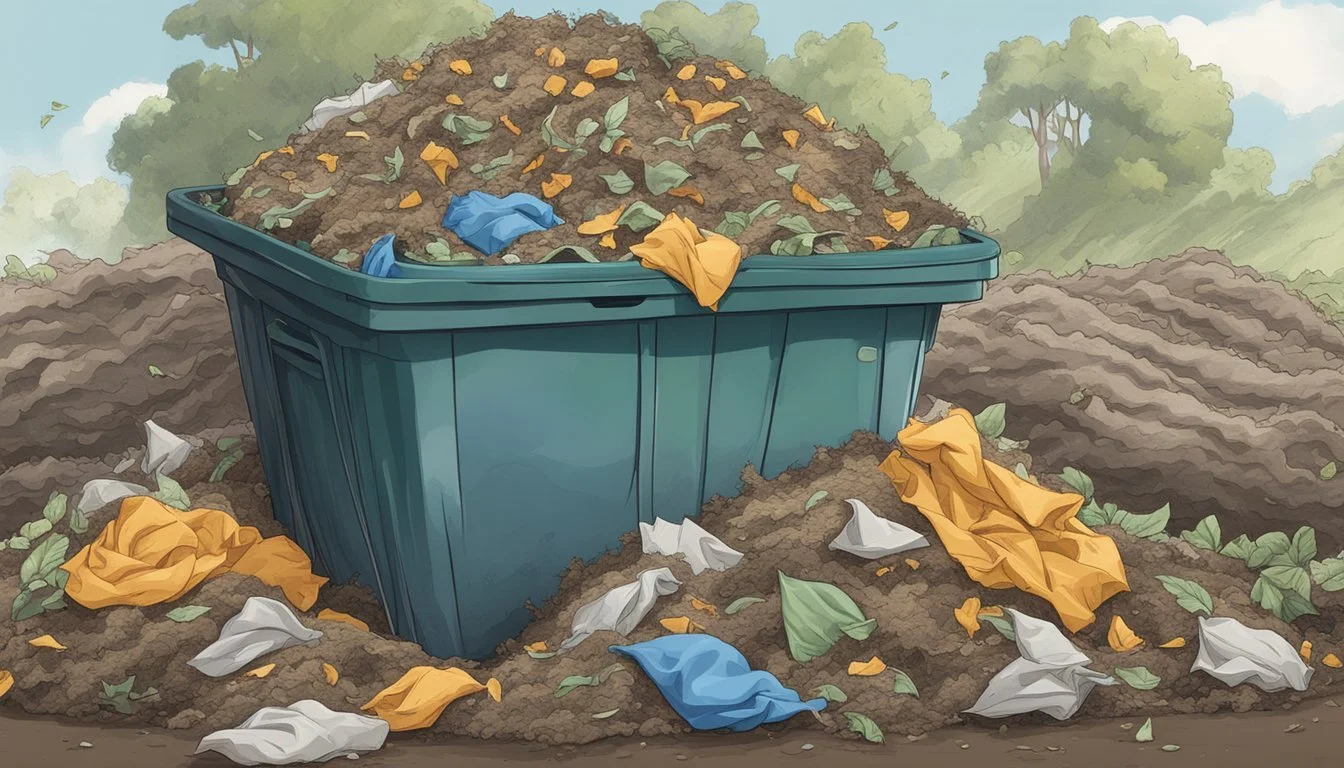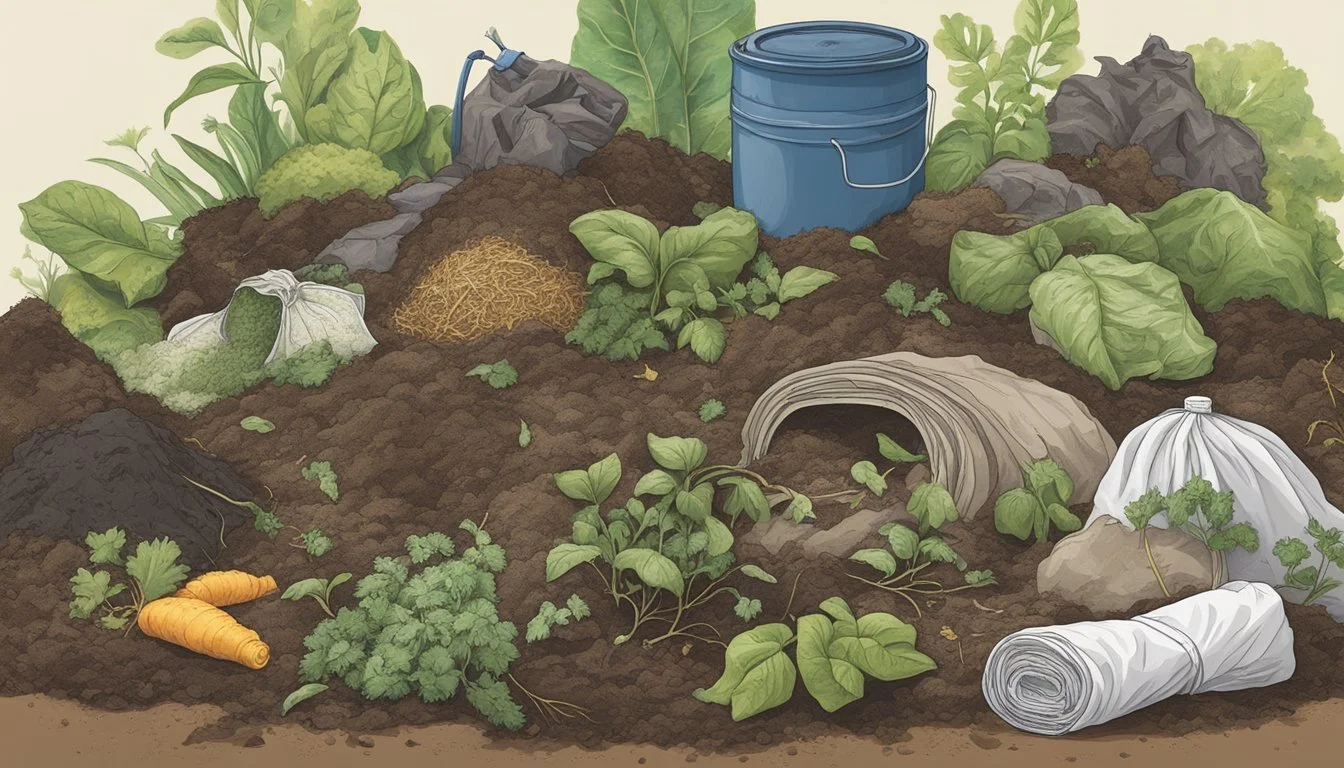Can You Compost Nylon Fabric?
Debunking Myths and Explaining Facts
Composting has become a popular method for disposing of organic waste in an environmentally friendly manner. It involves the biological decomposition of organic material under controlled conditions to form a nutrient-rich soil amendment. As more people look for sustainable ways to reduce waste, the question of whether various materials are compostable has become prominent. Nylon fabric, a common material in the textile industry, is synthetic and typically derived from petroleum products.
Nylon does not break down easily in a home composting system. The fibers are designed for durability and resistance to biological degradation. As opposed to natural fibers like cotton, wool, or silk, which can decompose under the right composting conditions, nylon's synthetic composition prevents it from being broken down by the microorganisms that facilitate the composting process. Consequently, adding nylon fabric to a compost heap can lead to contamination of the soil amendment and is not recommended for those aiming to produce eco-friendly compost.
Understanding Nylon Fabric
Nylon fabric is a prevalent synthetic material in the textile industry, known for its durability and versatility. However, its environmental impact is a concern due to its synthetic nature and resistance to decomposition.
Properties of Nylon
Nylon is a synthetic polymer, made from petroleum-based chemicals, that presents as a flexible, durable, and resistant to wear and tear. These properties make it an appealing choice for a wide range of applications, from clothing to outdoor gear.
Environmental Impact of Nylon
As a synthetic material, nylon production contributes to greenhouse gas emissions and relies on non-renewable resources. In landfills, nylon can take years to decompose, accumulating as a persistent form of textile waste and affecting climate change.
Nylon in the Textile Industry
Nylon is widely used in textiles due to its strength and elasticity. Fabric scraps and end-of-life clothes made of nylon represent a significant portion of textile waste, challenging the industry's sustainability efforts.
Recycling and Reusability of Nylon
Recycling nylon is possible, with initiatives to turn nylon waste into recycled polyester being one method to reduce waste. However, the recycling process is complex, and not all nylon is suitable for recycling.
Alternatives to Nylon
Natural fibers like cotton, silk, wool, hemp, and linen offer sustainable alternatives to nylon, as they are compostable and have less negative environmental impacts.
Comparison of Nylon With Other Fabrics
Nylon's durability and moisture-wicking properties set it apart from natural fibers such as cotton and wool, but its environmental ramifications contrast with the sustainability of natural textiles.
Types of Nylon and Their Compostability
Various types of nylon exist, with differing properties and uses. None are readily compostable due to their synthetic polymer structure, making them unsuitable for adding to compost piles.
Nylon and Biodegradability
Unlike natural fibers, nylon is not biodegradable. It resists decomposition in landfills, remaining intact for many years and contributing to environmental pollution.
Chemicals and Dyes in Nylon Production
The production of nylon often involves toxic dyes and chemicals, which can be harmful to both human health and the environment when improperly managed. The dyeing process also consumes significant quantities of water.
Nylon Fabric Lifespan and Durability
Nylon is celebrated for its long lifespan and durability, which contribute to extended use and potentially less frequent replacement, lending a slight advantage in terms of resource use over time.
Regulatory Standards for Nylon
The Environmental Protection Agency (EPA) and other regulatory bodies have set guidelines for production and waste management of synthetic materials like nylon to mitigate environmental impacts.
Frequently Asked Questions About Nylon
Questions surrounding nylon often address its sustainability, disposal options, and how it compares to other fabrics. Notably, many inquire about its role in the cycle of textile waste and opportunities for recycling.
Composting Essentials
Composting is an effective method for turning various types of organic waste into nutrient-rich soil amendment. The process involves the decomposition of organic matter, facilitated by microorganisms, under controlled conditions.
Basics of Composting
Composting is a natural process where organic matter such as food scraps and yard trimmings is transformed into compost. This transformation occurs through the activity of microorganisms, including bacteria and fungi, along with water and oxygen.
What Can and Can't Be Composted
Materials such as vegetable peels, fruit scraps, coffee grounds, and grass clippings are ideal for composting. However, synthetic materials like nylon should not be composted as they do not biodegrade easily and may release toxins.
Composting Methods
Common methods include home composting in a backyard bin, vermicomposting with worms, and community-scale composting. Each method varies in scale and the specific conditions required for effective composting.
Factors Affecting Compostability
The rate of composting depends on factors such as temperature, moisture level, the carbon to nitrogen ratio of the materials, and the presence of microorganisms.
Reducing Waste Through Composting
Composting can significantly reduce the amount of waste sent to landfills, thereby minimizing landfill usage and the associated production of methane, a potent greenhouse gas.
The Role of Microorganisms in Composting
Microorganisms such as bacteria and fungi are essential for breaking down organic materials into compost. Their activity is influenced by the environmental conditions within the compost pile.
Troubleshooting Common Compost Problems
Issues such as unpleasant odors and pests can often be addressed by adjusting moisture levels, ensuring proper aeration, and maintaining the right balance of green and brown materials.
Composting Guidelines and Best Practices
To achieve effective composting, it's important to mix greens (nitrogen-rich materials) and browns (carbon-rich materials), maintain adequate moisture, and turn the pile regularly for aeration.
Environmental Benefits of Composting
Composting helps reduce the emission of greenhouse gases and the reliance on chemical fertilizers, contributing to soil health and sustainability.
Compost as a Sustainable Fertilizer
The end product of composting is a nutrient-rich compost that can improve soil structure, water retention, and provide essential nutrients to plants, reducing the need for synthetic fertilizers.
Regulations on Composting
Local and national regulations may exist regarding composting practices, addressing concerns such as facility licensing and the processing of organic waste to protect public health and the environment.
Frequently Asked Questions About Composting
Common questions include what materials can be composted, how to start a compost pile, and how to use finished compost. Resources, such as guides provided by the Environmental Protection Agency, offer valuable information.
Can You Compost Nylon Fabric?
When it comes to composting, the suitability of nylon fabric is a concern due to its synthetic nature and resistance to degradation. This section explores the intricacies and impacts of attempting to compost nylon.
Challenges of Composting Nylon
Nylon is not biodegradable and consists of petroleum-based synthetic polymers. In a composting environment, nylon does not break down easily, making it unsuitable for composting efforts.
Nylon Degradation in Compost
The decomposition of nylon in compost is extremely slow, often taking several years. Nylon does not provide the essential nutrients needed for the thriving microorganisms within a compost system.
Composting Synthetic Fabrics
Most synthetic fabrics, like nylon, should not be added to a compost heap as they do not decompose like natural fibers and can contaminate the soil with microplastics.
Eco-Friendly Disposal of Nylon
For eco-friendly disposal, nylon should be directed towards recycling or reuse rather than a landfill or compost, thereby reducing waste and conserving resources.
Alternatives to Composting for Nylon Waste
Instead of composting, nylon waste can be handled through:
Recycling: Turning into new materials.
Reuse: Repurposing in creative ways.
Donation: Offering to textile recycling programs.
Advocating for Sustainable Practices in Fabric Disposal
The Environmental Protection Agency (EPA) advises that sustainable fabric disposal practices, such as recycling and reuse, help mitigate climate change and reduce waste, underscoring the importance of moving away from landfill dependency.
The Broader Context of Waste Management
In addressing the question of whether nylon fabric can be composted, it is vital to understand waste management's role in environmental sustainability, particularly how textile waste is processed and its broader environmental implications.
Importance of Proper Waste Segregation
Proper waste segregation is fundamental in managing textile waste effectively. Textile waste, when not separated, can end up in landfills, contributing to environmental degradation. Segregating natural materials like cotton from synthetic ones such as nylon can enhance recycling and composting processes.
Impacts of Textile Waste on the Environment
Textile waste poses significant environmental impacts, including the emission of greenhouse gases during decomposition in landfills, and the use of valuable land space. In particular, synthetic textiles can take hundreds of years to degrade, exacerbating the problem.
Innovations in Sustainable Textiles
The textile industry has seen innovations aimed at sustainability, such as the development of recycled polyester. These innovations reduce dependency on virgin materials, lower the carbon footprint, and decrease the volume of textile waste.
Global Efforts to Reduce Textile Waste
Globally, different entities are taking steps to reduce textile waste. Countries are implementing environmental protection policies, while companies are adopting models such as the circular economy to conserve resources and reduce waste.
Consumer Choices and Their Environmental Footprint
Consumers' purchasing decisions play a critical role in waste management. Opting for apparel made from natural materials that are easily recyclable or compostable can significantly reduce one's environmental footprint.
Government Regulations and Policies on Waste
The Environmental Protection Agency and similar bodies worldwide have set regulations to manage and reduce waste. These include guidelines on recycling and composting that encourage the diversion of organic waste from landfills.
Frequently Asked Questions About Waste Management
Common inquiries in waste management involve the specifics of composting and recycling different materials. For instance, questions about whether nylon fabric can be composted are frequent as consumers seek to adopt more sustainable practices.





